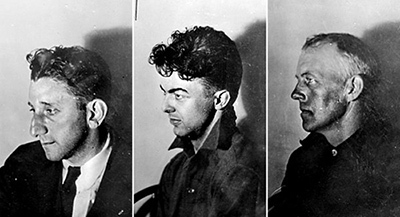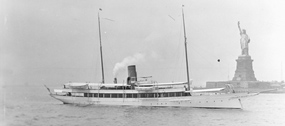Smugglers, Bootleggers, And Scofflaws:
Prohibition And New York City
By Ellen NicKenzie Lawson PH.D.
Tag Cloud
Reviews of Smugglers, Bootleggers, and Scofflaws; Prohibition and New York City
Timothy Houlihan, St. Francis College In 1955, Richard Hofstadter wrote confidently: “To the historian… the story of Prohibition will seem like a historical detour, a meaningless nuisance, an extraneous imposition upon the main course of history. The truth is that Prohibition appeared to the men of the twenties as a major issue because it ws a major issue…” Dozens of films, Broadway shows, and popular television series later, historians and others could be forgiven for agreeing only with the first part of Hofstadter’s analysis.Read Full Review
New York Post Each autumn during Prohibition, it was not uncommon for the streets of Greenwich Village and Little Italy to run purple. This was due not to falling leaves or some Barney flash mob gone horribly wrong. It was 50,000 Manhattan residents supplementing their income by illegally making wine for the mob.This is just one of the many factoids crammed into “Smugglers, Bootleggers, and Scofflaws,” which, based on little-used Coast Guard records, tells the tale of how, and why, New York was the booze capital of the country during the sad, sad decade when alcohol was illegal in the United States.Read Full Review
San Francisco Book Review Lawson offers an intriguing microcosm for the era as a whole in her examination of accounts of criminals, icons, and changing societal values, especially when compared to the more familiar battlegrounds of Chicago and the Canadian border. Rich with personalities and anecdotes, not to mention insight on the smuggling and prosecution sides of the Prohibition coin, Smugglers, Bootleggers, and Scofflaws adds deeper shading to an already colorful time period.Read Full Review
The East Hampton StarIt was near midnight on Jan. 16, 1920, and at the Park Avenue Hotel in New York, waiters and patrons were dressed in all black and drank liquor from black glasses. Let Ellen NicKenzie Lawson take it from there:Read Full Review
CROTON History & MysteriesA recently published book, Smugglers, Bootleggers and Scofflaws: Prohibition and New York City by Ellen NicKenzie Lawson, contains an amazing 1924 aerial photo, purporting to show rum-smuggling submarines in the Hudson River near Croton Point. The photo appears in the chapter “Rum Row”—the name of the smuggling area of the Atlantic coast from Nantucket to New York City and New Jersey.Read Full Review
NY Times, Sunday, Metro section, January 26, 2014

“New York City, the nation’s largest liquor market before Prohibition, retained this distinction through the Dry era,” Ellen NicKenzie Lawson writes in “Smugglers, Bootleggers and Scofflaws: Prohibition and New York City” (Excelsior Editions, State University of New York Press). Read Full Review
Prohibition and New York City. Albany: SUNY Press, 2013. Pp. 151. ISBN: 9781438448169. Paper, $19.95
“The Prohibition Era brings to mind the Mafia and the government G-men who sought their elimination. But there is also a maritime component to this story. Ellen NicKenzie Lawson examines the movement of illicit spirits to the New York Metropolitan area. Local Long Island smugglers traveled to foreign ‘wet’ markets, such as Bermuda, to pick up their cargo. Utilizing local geography, weather, and contacts they evaded Coast Guard blockades to deposit their cargo with Manhattan Mafiosos who then supplied reputable speakeasy consumers. While geared to a popular audience, Lawson’s evidence evokes some of the larger themes of Transatlantic history. The study not only links Long Island to New York City, but also to a greater transnational maritime culture. This work provides useful data that expands beyond our national compartmentalization of the Prohibition Era. Read Full Review
